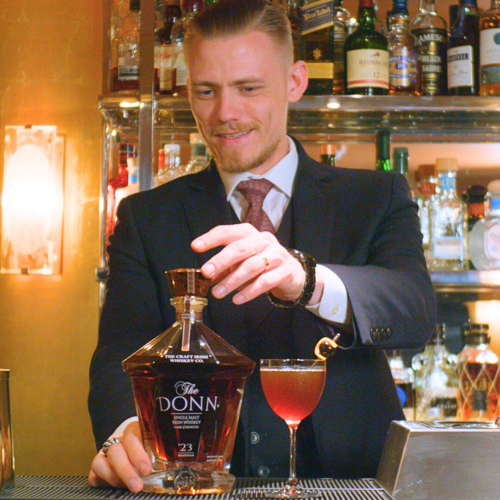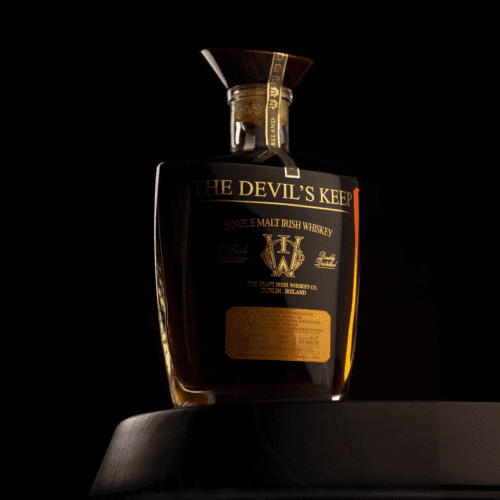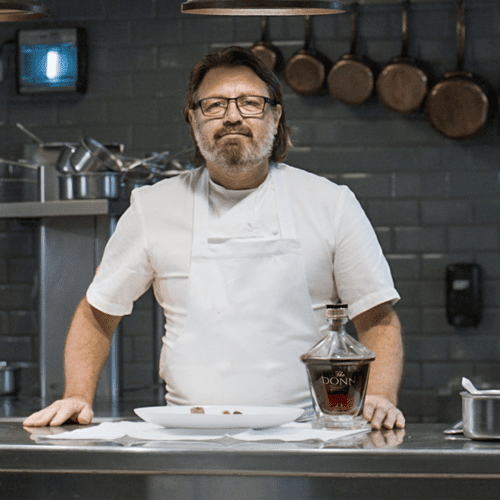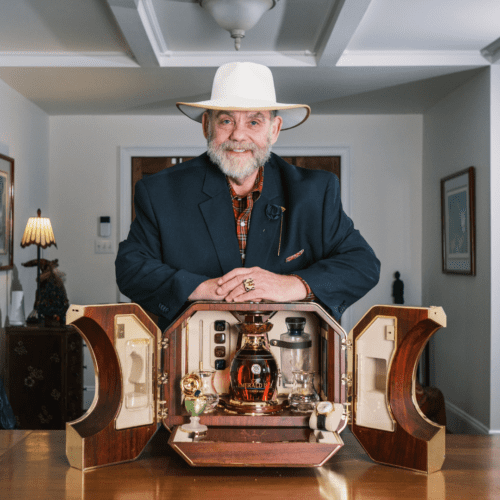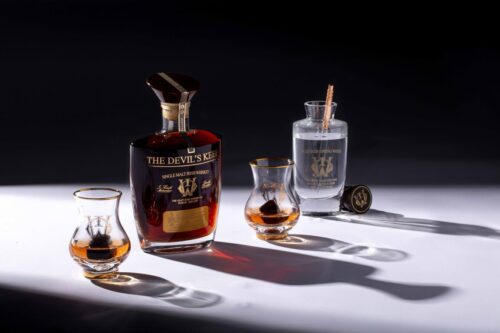Irish Whiskey is the original whiskey—the oldest style of the category, with records of its existence dating back to 1405. We find it in a description in the Annals of Clonmacnoise which mentions a “surfeit of aqua vitae.” To be sure, that liquid would bear little resemblance to what we’ve come to know today as whiskey. The spirit has evolved quite substantially over the past 600 years and we think for the better.
Today there is so much variation within the category. Popular types of Irish Whiskey can include single malt, single pot still, single grain, and blended—to name the top sellers. The only thing tying these different types of whiskey together is that they must be distilled, aged and bottled on the Emerald Isle (this could mean the Republic or Northern Ireland), they must be distilled from cereal grain and must be aged in wood barrels for no less than three years. That’s a big umbrella, and it fits plenty of liquid within. Here we’re going to take a look at Irish whiskey’s history, the different types of Irish whiskey, and what makes each style distinct.
The History of Irish Whiskey
Irish Whiskey once ruled the world. And this is by no means an overstatement. Near the end of the 1800s, Irish distillers accounted for just over 70% of the world whiskey market. In the United Kingdom, this dominance was even more pronounced. Two out of every three bottles of whiskey sold in London in the late 19th Century came from the Emerald Isle. It was the primary export spirit to the United States. Dublin was the heart of it all. Things seemed like they couldn’t go wrong for the category as it enjoyed a golden age that spanned decades.
But a series of circumstances conspired to wipe out that supremacy. The Scotch started offering lighter, more quaffable blends—which Irish producers viewed as inferior spirit unworthy of their time and effort. American Prohibition hit in 1920, right around the same time as Irish Independence from the Crown, at which point the British government did everything within its power to promote native scotch at the expense of Irish imports. Very suddenly, Irish Whiskey makers found themselves without their two largest export markets.
A dark period ensued, lasting throughout the remainder of the 20th Century. It saw the closure of many once-prominent Irish producers from up and down the island. Then came consolidation, with the major players all banding together to try and stave off bankruptcy. That consortium, known as Irish Distillers LTD, was purchased by the French-based Pernod Ricard back in 1988. And so for a while, the Irish weren’t even independently in control of their own whiskey making destiny.
The tide finally started to shift back in the early 2000s. Around this time, Jameson was the main name that most drinkers outside Ireland associated with the category of Irish Whiskey. But a global thirst for craft was taking shape. And a slew of intrepid producers from around the country were ready to take the call, regaining the stature of the native liquid. In order to make it happen they needed to believe in themselves. They also needed a bit of cash flow, which was now in more steady supply thanks to the economic prosperity of the Celtic Tiger. It was a period of prolonged growth for the Republic of Ireland, and this auspicious era reawakened investors to the untapped potential of Irish Whiskey. In a category steeped in centuries of proud tradition, there was room for much more than just Jameson and Bushmills.
So new brands started cropping up, including those that reinvigorated an excitement for the once-forgotten style of Irish Single Pot Still. The success of these new labels was nearly instantaneous, and it wasn’t long before Irish became the fastest growing style of whiskey on the planet. But with different Irish whiskey ingredients, and different types of Irish whiskey, knowing what to drink can make the difference between liking Irish whiskey, and falling head over heels in love with the liquid gold.
How is whiskey made?
While the ingredients in whiskey are limited, the ways of making it, and the different types, are many and varied. While corners can be cut, and mass production often requires they are, making whiskey is actually an art. There’s no one explanation of how Irish whiskey is made, just as there’s no definitive whiskey ingredients list. A Master Blender such as Jay Bradley takes each whiskey as an individual, crafting it just like a Michelin-starred chef crafts a fine meal; regularly tasting to determine what each needs to build the intricate layers of flavour so beloved by Irish whiskey fans across the world.
But that’s a tale for another instalment in our Whiskey Guide. Before we move onto the burning question of ‘how do you make whiskey?’, here are those different whiskey types explained:
Irish Single Malt
Much like its Scottish counterpart (Scotch), single malt Irish whiskey is distilled entirely from malted barley and is made entirely in one unique distillery. But there are different types of single malt whisky, so don’t be fooled by the misleading “single” in the term. That refers to one single distillery. It does not mean that the whiskey came from one single barrel. In fact, it is most often the result of many different barrels all aged by that same single producer. These liquids don’t have to be distilled three times, only a minimum of twice. Nevertheless a great many Irish whiskeys pride themselves on triple distillation as a matter of distinction from Scotch single malt, which only goes through two distillations. All of the whiskeys released by The Craft Irish Whiskey Co., with the exception of The Brollach, fall under this category, including The Devil’s Keep—which was just named the World’s Best Irish Single Malt Whiskey.
Irish Single Pot Still
Another somewhat misleading ‘single’ here, because Single Pot Still Irish whiskey does not have to be distilled in a single pot. This type of whiskey—quite unique to Ireland—is distilled from a combination of malted and unmalted barley. It was born of an era when the British Crown was taxing whiskey makers through steep fees assessed on the malted grains that went into production. Industrious distillers found a workaround by incorporating a sizable percentage of unmalted barley, often used by farmers, which wasn’t subject to the same tax. The unusual mash bill typically produces a wondrously earthy and creamy sort of whiskey. It is distilled in a copper pot still as opposed to a more industrial column still. It just doesn’t have to be a single one.
Irish Single Grain
A light and alluring style of whiskey, it has for over a century been a crucial component of blends. But in recent years, single grain is emerging as a marketable subcategory all of its own. Again don’t be fooled by that ‘single’ terminology. The single here simply refers to the fact that it comes from one single production site. But it is actually distilled from a whole slew of cereal grains, most notably corn, but also a small component of barley, rye, and sometimes even wheat. But even more important than the ingredients used, is the method of how they are all distilled: in massive, multiple-story-high column stills. This type of production gives Irish grain whiskey its signature lightness.
Irish Blended
Irish Blend whiskey is the current leader in terms of sales and global popularity, Jameson being the most famous example. Blended here means that it’s an assemblage of liquids from multiple distilleries, often spanning several different styles—including the ones aforementioned. For example, if a producer combines Irish Single Malt from one distillery, Irish Single Pot Still from another, and Irish Single Grain from yet another, the result will be a Blended Irish Whiskey. They are round, smooth and often appeal to palates just warming up to the whiskey category.
What’s your tipple of choice?
So from a single malt Irish to a blend, or a double malt to a triple malt Irish whiskey; learning more about the Irish whiskey types is the first step on a fascinating, and rewarding journey towards becoming a whiskey enthusiast. Whether you drink yours with the perfect amount of water or neat, on the rocks or as it comes, this one-stop guide to the different types of Irish whiskey should have laid the foundations for a lifetime of whiskey enjoyment.




